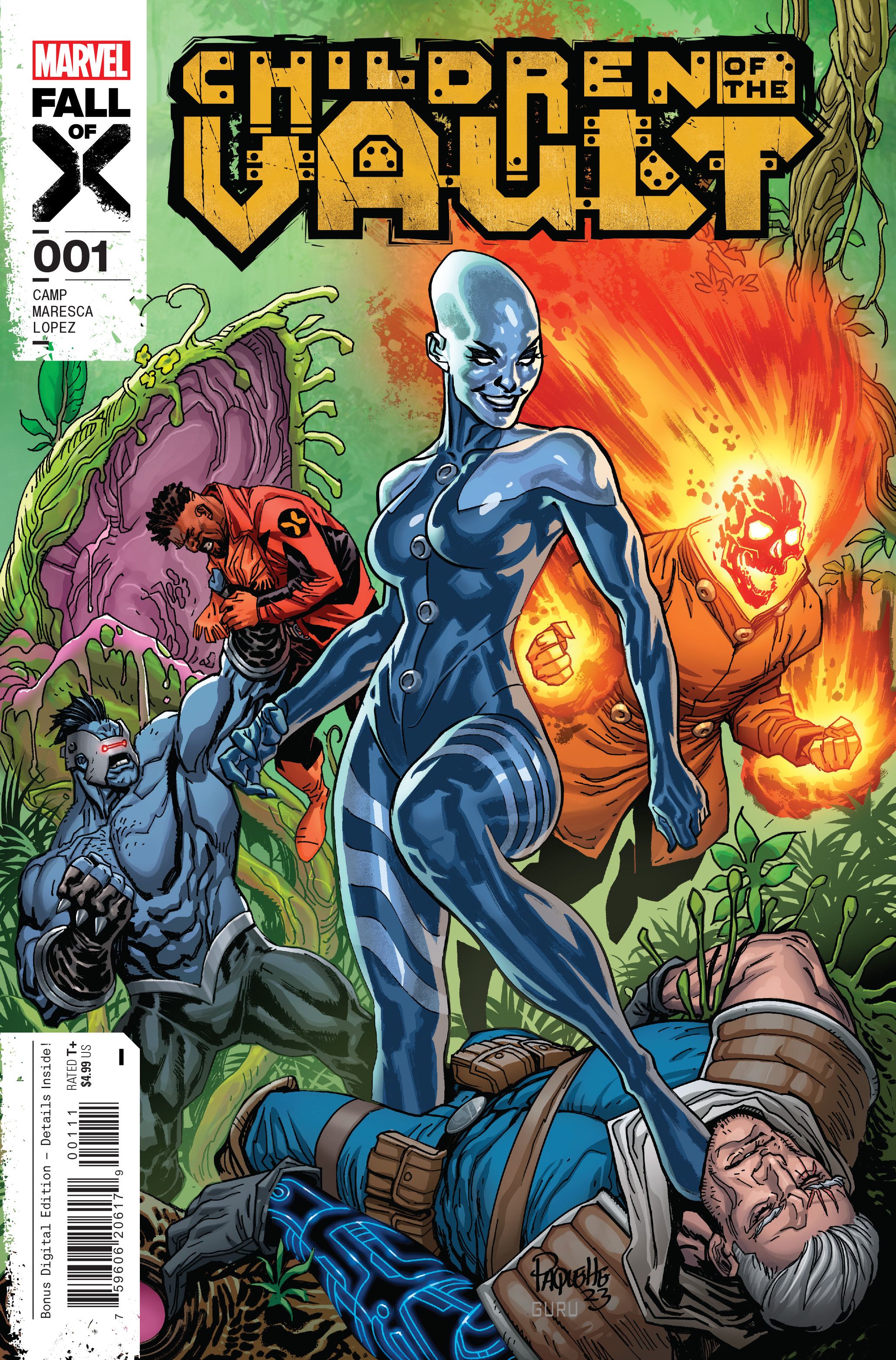The Fall of X left mutantkind desolated and brought a handful of new titles to the X-line. Children of the Vault sees the titular characters awaken from a prison of dreams to learn that their imagined conquest was a lie. Foes of the X-Men first introduced in the ’90s, the Children are highly-evolved post-humans who come from a society that experienced time at an accelerated rate within the Vault. Early on in the Krakoan Age, Forge decided that the only way to defeat the Children was to convince them they had won. He constructed a dream prison for the Children where they would imagine their victories over the Earth. Children of the Vault #1, written by Deniz Camp with art by Luca Maresca, colors by Carlos Lopez, letters by VC’s Cory Petit, and design by Tom Muller and Jay Bowen, picks up as Forge’s prison for the Children fails and unleashes them once more upon the world.
This issue follows two main narrative threads that begin to cross near the end of the book. The first is that of the Children waking up, vowing revenge on the X-Men. From here, though, their actions seem to take an uncharacteristically altruistic turn. The Children present their advanced technology to the world as a gift, promising to be the salvation humanity needs. The other arc sees Bishop rescuing Cable from the clutches of Orchis as the two begin to take stock of their situation after the cataclysmic events of the Hellfire Gala. The pair is ruthlessly efficient and immediately clock the Children as a threat, despite appearances to the contrary.
Camp takes this series in possibly the most interesting direction it could go. Rather than having the Children attack the X-Men, they’re playing a game similar to Orchis — garnering public support — but in a much more morally acceptable way. The Children are gifting advanced, life-saving, and life-improving technology to people who need it most. Readers know the Children are the bad guys, and so do Bishop and Cable, but arguments could be made that what they’re doing here is actually beneficial for the planet. They aren’t spreading hate like Orchis, but their methods for garnering so much support so quickly are revealed to be problematic at best. Still, the issue encourages compelling discussion on the nature of right and wrong.
Maresca’s art is fantastic throughout. This feels like a flagship title. Immense scale, stellar action, and perfectly timed pacing propel readers through the narrative. Seeing Bishop and Cable in action is thrilling, and their designs look as good as ever. The Children of the Vault are especially striking. Their designs blend feelings of the ancient past with the far future. This book gives Maresca the chance to really flex with everything from underground bases to the glittering cities of tomorrow.
Lopez’s colors are stellar from cover to cover. This book goes all around the world, and each location is given a different atmosphere through the lighting and color palette. When the action hits, it’s as captivating as ever. The depth given to lighting and smoke effects is particularly striking. Petit’s letters present the omniscient narration in clean, straight-to-the-point boxes that match the tone. The placement of each narration box and dialogue bubble is impressive across an issue that features so many dynamic page layouts. Petit always leads the reader’s eye exactly where it needs to go.
Muller and Bowen’s design work shines in the still-featured data pages that became a staple of the Krakoan Age. These pages give further insight while saving critical page space. This issue is firing on all cylinders from page one, panel one. It takes one of the most interesting groups of X-Men villains in a fascinating new direction while fitting seamlessly in with the line-wide status quo. Cable and Bishop shine as co-leads, and the Children are teed up for an all-time story. With Children of the Vault #1, Camp and the rest of the creative team deliver an action-packed and thought-provoking first issue.



